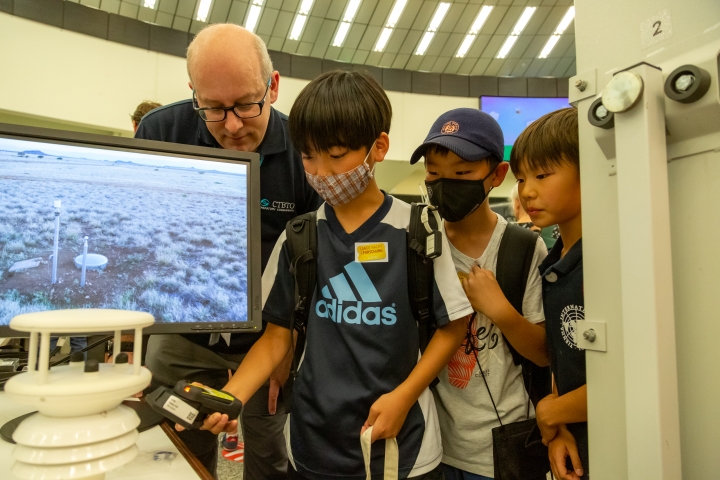The long night of research: How does science make things crystal (nu)clear?
The Comprehensive Nuclear-Test-Ban Treaty Organization (CTBTO) joined other members of the UN family to showcase their work in Austria’s Long Night of Research, the largest public event for science and research in the German-speaking world.
Known in German as the Lange Nacht der Forschung, the event on 20 May featured over 280 exhibits across Austria, with guided tours and workshops, lectures and live presentations.
At the Vienna international Centre, the CTBTO joined the International Atomic Energy Agency (IAEA), the International Commission for the Protection of the Danube River (ICDPR), the International Organization for Migration (IOM), the United Nations Industrial Development Organization (UNIDO), the United Nations Office for Disarmament Affairs (UNODA), and the United Nations Office on Drugs and Crime (UNODC) to celebrate and explain the science and technology underpinning their work.
At the CTBTO station, the three major components of the organization’s verification regime – the International Monitoring System (IMS), International Data Centre (IDC), and On-Site Inspection (OSI) – were on display, with over 30 staff members presenting their work and interacting with the public in English and German.
Among the equipment on show were hand-held thermal cameras, gamma radiation backpacks, and a radiation portal, which would be used by on-site inspection teams investigating a potential nuclear explosion.
Visitors were also interested in the different technologies used across the IMS to detect nuclear tests, including seismic sensors, infrasound sensors, and digitizers.
The CTBTO’s Executive Secretary, Robert Floyd, joined the event and engaged with the public. He hailed the evening as "a great success... and a remarkable opportunity to showcase each Division's contribution to our collective achievements".
The Long Night of Research is normally held every two years, but in 2020 it was cancelled due to the global health crisis. The large turnout for this year’s event, spanning over six hours, with over 1,400 visitors of all ages, was testament to strong public interest in the work of the UN’s Vienna-based organizations.
Peter Kopfensteiner, a biology student at the University of Vienna, and Lukas Zettl, a visiting doctor at Vienna General Hospital, were among the participants, and had also attended the event in previous years. “We’ve always really enjoyed the Lange Nacht der Forschung, especially the Vienna International Centre’s exhibits,” they said. “They’re always so interesting and fun.”
Peter Labak, who heads the Equipment and Implementation Section of the OSI Division, noted that it was “great to see people interested and inquisitive about the CTBTO”.
Paulina Bittner, Waveform Lead Analyst of the IDC, who took part in the event for the first time this year, said: “The children were interested in knowing whether we can communicate with whales, which I thought was fun because we don’t normally get asked questions like that.”
27 May 2022

CTBTO Executive Secretary Robert Floyd interacts with staff from the International Data Centre (IDC)

Children learn about radiation detection equipment, which would be used in an on-site inspection (OSI) of a potential nuclear site

Staff enjoy the CTBTO exhibit with their children

International Monitoring System (IMS) analysts speak with the public about nuclear test monitoring technologies

CTBTO Staff participating in the Long Night of Research

The CTBTO exhibit at the Long Night of Research





